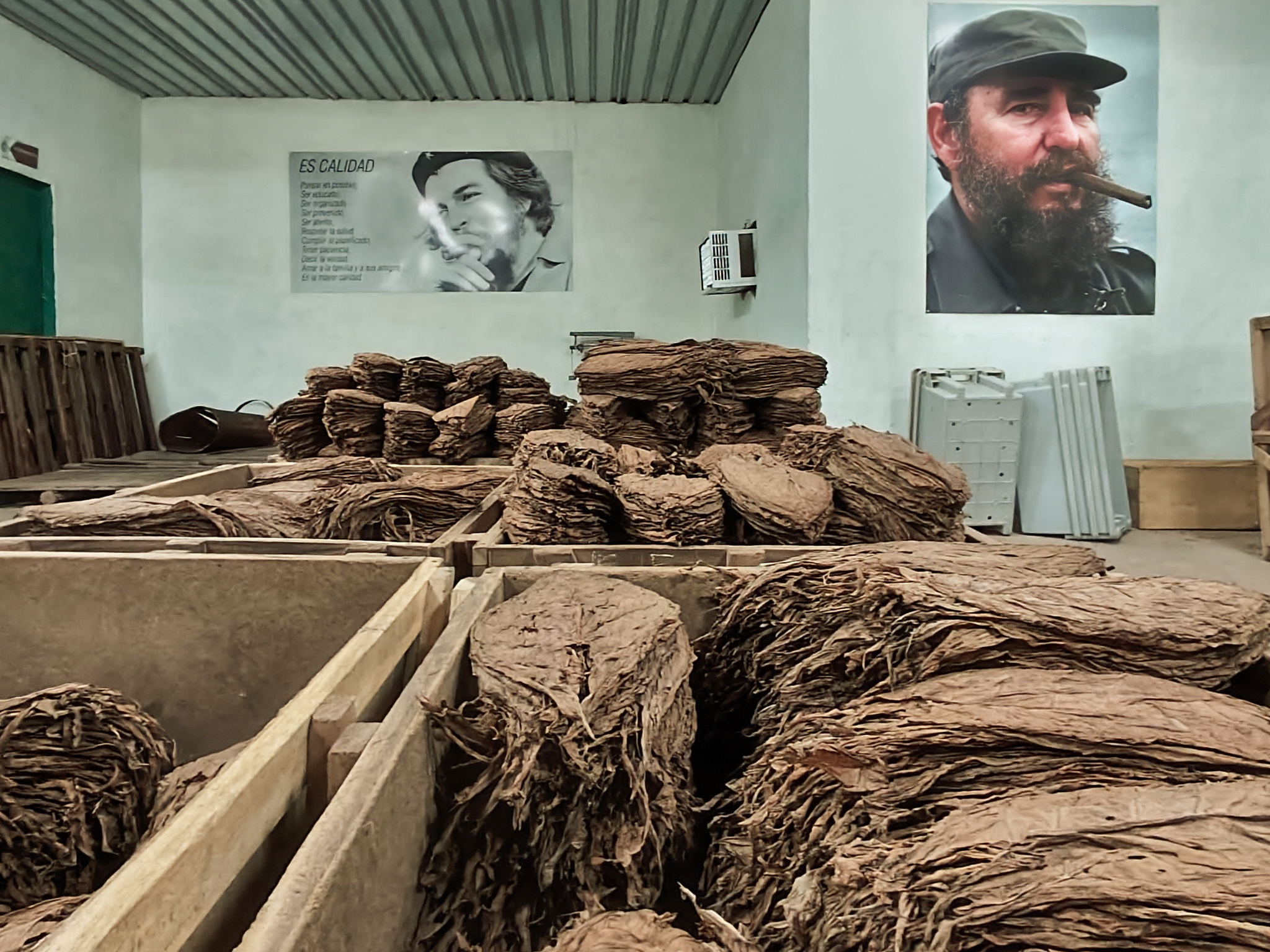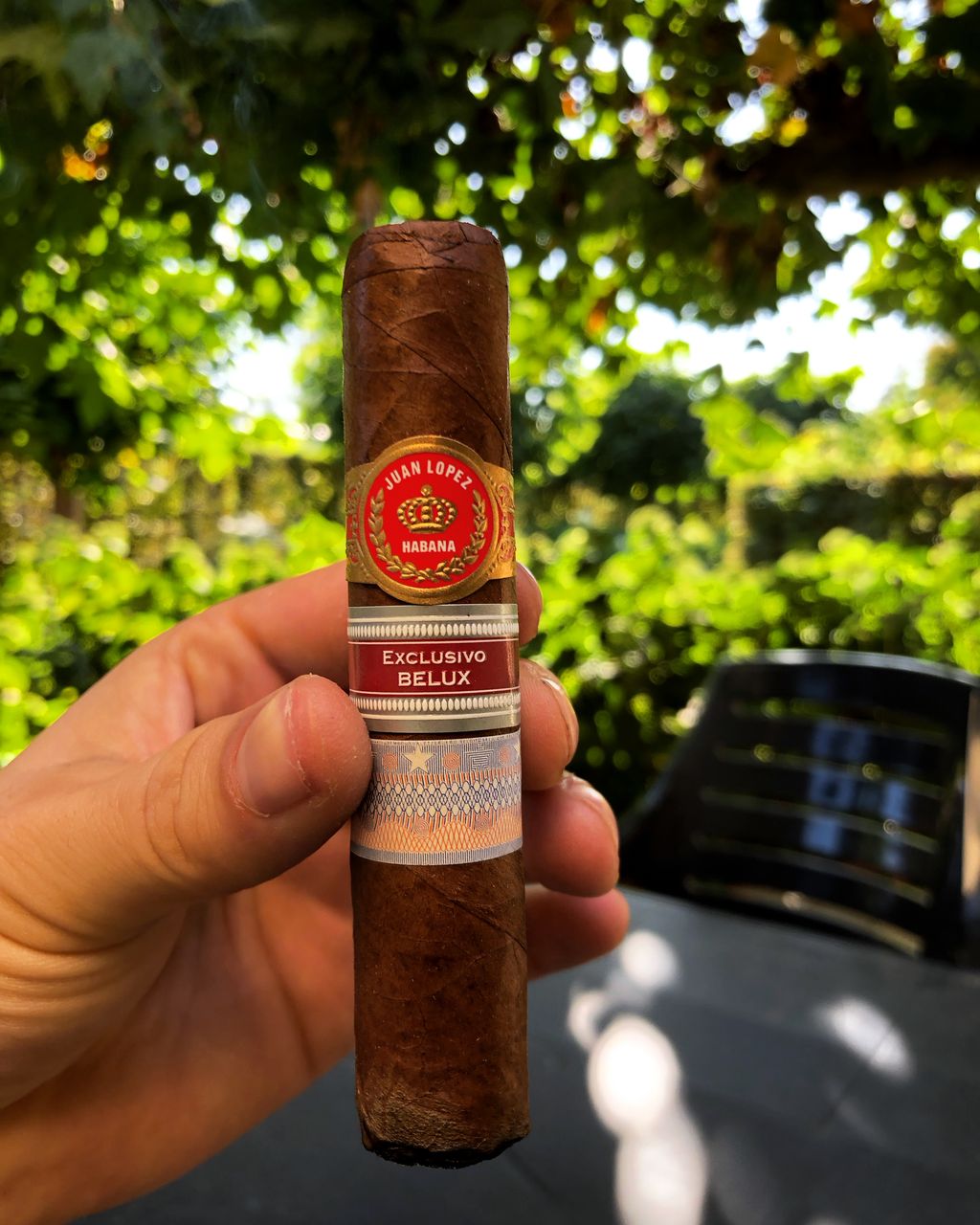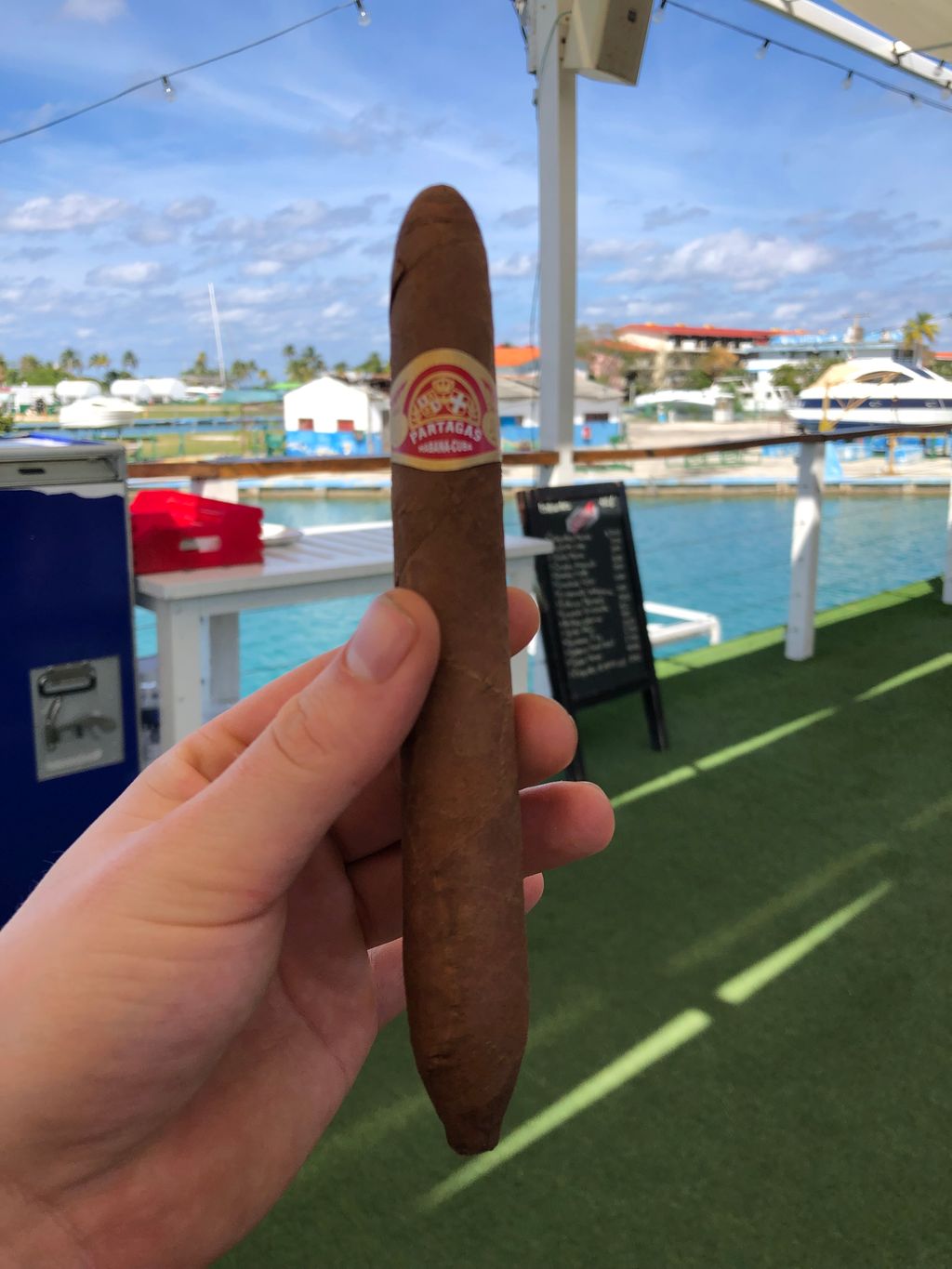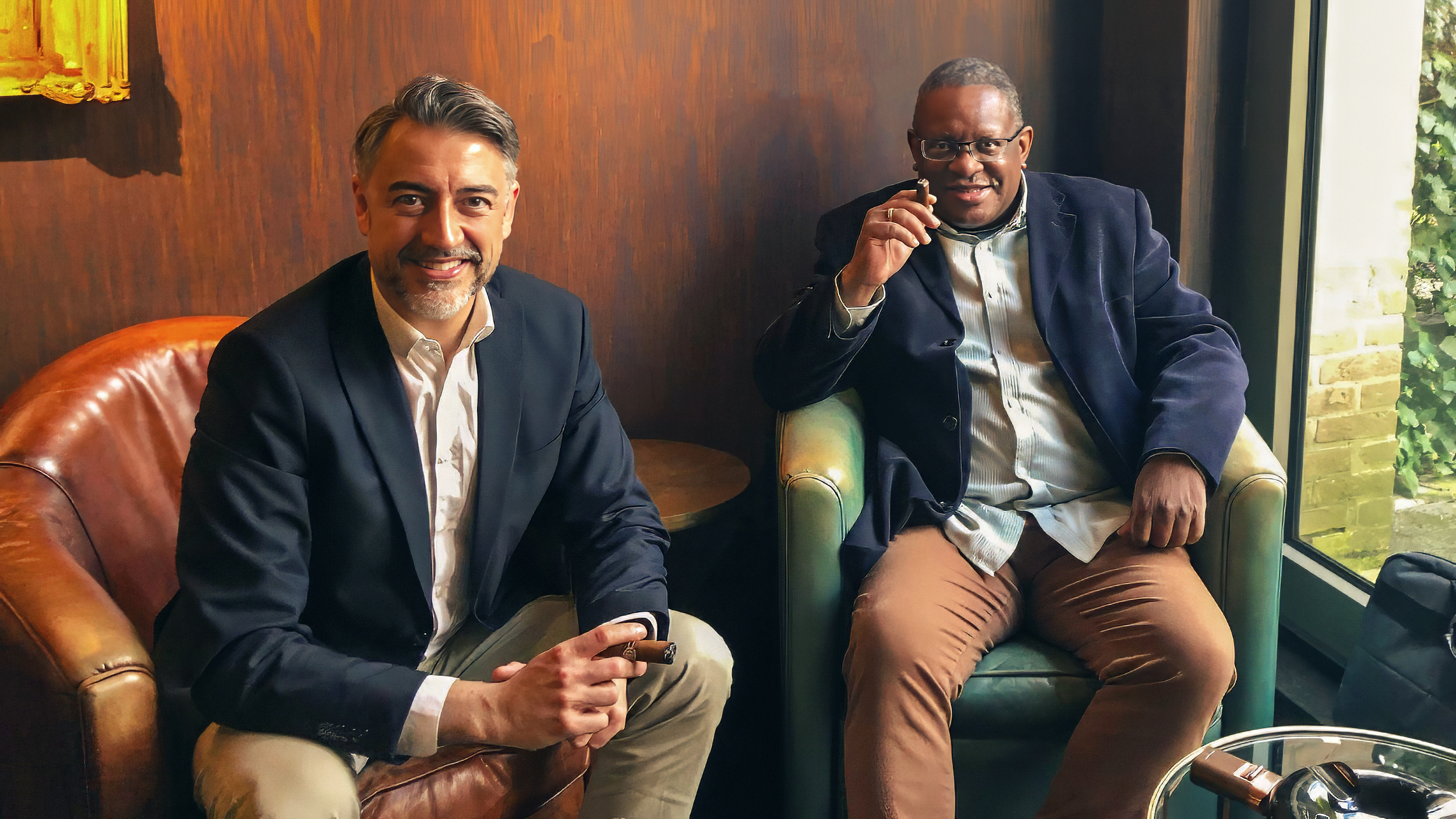Recently, I had the honor of sitting together with Rodrigo Crespo and Nestor Valera. These two gentlemen are responsible for overseeing the distribution of Habanos cigars in Belgium, the Netherlands, and Luxembourg. We met at a very nice cigar shop and lounge, the La Casa Del Habano shop in Brussels in the European District.
I met Rodrigo a few months earlier in a nice restaurant located in Havana, Cuba. I was there on a trip organized by Habanos; we were sitting in the sun smoking the new Partagas Maestro Rito, and I asked if he was interested in giving an interview with us, Cigar Inspector. He loved the idea but wanted to do this together with his partner, Nestor. So, who are these gentlemen?
Nestor is the veteran of the two. He started his career back in 1989 with TabaCuba in the commercial division. Nestor was already a Cuban smoker thanks to his father and uncle, who were smoking all the time. So, he enjoyed smoking a cigar and for him, it was a pleasure starting to work for TabaCuba because this gave him the chance to work with the products that his father and uncle enjoyed so much.
So, Nestor started out working in the commercial division, but he chose to climb the ladder. After a few years in the commercial division, he moved up to the finance division followed by the La Casa Del Habano Division. In this division, he was posted abroad for a little time but eventually was brought back to Cuba. For ten years, he was the Managing Director of the La Casa Del Habano division in Cuba, developing franchises of La Casa Del Habano all over the world. Later in his career, he was posted in the Benelux.
Rodrigo joined the Tabacalera group almost 20 years ago in Spain. The reason he joined the company was that he was really attracted to the product and all the truth the cigar market has. Before he started his career in the cigar industry, Rodrigo worked in other multinationals regarding cosmetics and fragrances, but he missed the agricultural, handmade aspect of these products.
Rodrigo links back cigars to family and good moments. Back in the days, smoking was very widespread in Spain. It was very common to smoke a cigar to end a meal, or when you’re walking in the village park, or when playing dominos; there was just always a cigar present during these moments.
Quote: “I found the truth and the magic of these moments in cigars.”
So, his career started almost 20 years ago, and like Nestor, he chose to climb the ladder. Since then, Rodrigo has fulfilled different positions in different business units. From Spain, he moved to England for six years and now he has been in the Benelux for four years.
What’s the difference between Habanos and TabaCuba?
Before we move on in this interview, I find it important to set a few things straight for you, our reader, so that you understand a bit more about the company. Habanos is the overall name, but it consists of two companies: Tabacuba and Tabacalera. TabaCuba has 50 percent shares owned by the Cuban company and Tabacalera also had 50 percent. Tabacalera is a Spanish company previously owned by Imperial Tobacco and since late 2020 in the hands of an Asian investment group.
Rising Prices
Every year, we see a price increase of about 15 percent on our beloved smokes. The reason for this, according to Nestor, is that everything in the world is going up. If you look at the prices of fuel and labor costs, it is only natural that product prices increase along with other prices.
We feel that the demand for Cuban cigars is still very strong, and we still can’t accommodate the high demand. People are still smoking their Cuban cigars. The good thing about the Habanos company is that we distribute 27 brands. Even nowadays after all the price increases, we have entry-level Habanos cigars at very affordable prices around the 3-euro mark.
Should Cigars Have a Price Limit?
I think that the Habanos company strategy is very well based, we have a very wide distribution network, and we at Habanos receive feedback from companies all over the world regarding the demand and the way that they are selling the cigars and the distribution factors, and I think that the price quality is based on actor-fact, and I don’t think that the ceiling is reached yet.
Tobacco Shortage
After COVID and the hurricane of 2022, a lot of tobacco fields were lost. Instead of 14 thousand acres, they now only have half the space they used to have to plant tobacco. Do you think this will affect the numbers? Actually, we don’t handle the production or agricultural side of the story. Habanos only commercializes and distributes the cigars that are produced by TabaCuba, so this is outside of our perimeter. However, I firmly believe that the key areas that produce top-quality tobacco, those areas keep producing at their normal numbers because these areas haven’t been reduced.
Hurricane Ian
In 2022, Hurricane Ian made landfall in Cuba. This massive hurricane destroyed a lot of houses and electricity infrastructure but also did a lot of damage to tobacco fields and curing barns. Sadly, a lot of cured tobacco was lost, and farms like Vegas Robaina are still rebuilding to this day. This has affected the supply of cigars. How long do you think until the normal situation is restored? We get positive feedback from the industry that production is coming back. Our government is taking all the measures needed to restore the former production numbers that we had seen in previous years. The Cuban government has put full support into this process because Cuban cigars are socially important not only for our economy but also for our culture and history. We believe that in a few years, production will be back at regular levels.
Are New Cigar Releases Becoming More Expensive?
We see with the new releases of Habanos that there is a certain price tag. For instance, the new Partagas Linea Maestra Rito will hit the shelves with a price tag of 85 euros, the Cupidos came out at 65 euros, and even the Epicure No.3 costs around 22-25 euros. Do you think that all new releases will have a higher price tag? Well, there are releases in different brands and all have their own strategy and market position. However, there are still new releases like our new Vegueros CentroGordos, which are under the 10-euro mark which shows that we don’t forget about our entry-level cigars. One of our key interests as well is that we are able to put more affordable and medium-priced cigars onto the market to balance out the shortage of supply. We try to satisfy every customer that we have by providing them with cigars starting from the 3-euro mark all the way up.
Counterfeit Cubans
One of the latest trends is making fake Cuban cigars and selling them off as real ones. Is there a way for our readers to be sure that they buy the real deal? The answer to this question is pretty simple to us. If a deal is too good to be true, it usually is. Only buy your Habanos cigars at official shops! If somebody tells you a story about a friend or cousin in Havana, then you know what you are getting yourself into. More on this topic about how to check out Cuban cigars if they are legit will come in an upcoming article that I’m working on so that you can check out every box next time that you buy a Cuban.
The Asian Investment Group
Last year, an Asian investor bought 50 percent of the shares of the cigar branch of Imperial Tobacco for a whopping 1.3 billion dollars. Does this mean that more cigars will make their way to the Asian markets? Don’t mistake yourself; they did not buy TabaCuba. They bought the other 50 percent that was in the former hands of Imperial, so they purchased half of Habanos. According to the information from Habanos, 50-60 percent of the export of cigars is still going to the European markets. Europe remains our most important region. If you want, you can see the official numbers in the yearly report released during the Habanos festival. This ratio of export percentage has proven pretty stable over the last years.
How does the Regionales get chosen?
This question was burning in my mind for a long time, and the answer really surprised me. I always thought that selecting the Regionales for a specific country would be like an award show. But it works a bit differently in real life than in my imagination. It works like this: each distributor in each country has to make a proposal every year of the regional editions that they want to have for their market. Of course, there is a limited selection of brands that can be used to make regional editions. Each distributor knows for their region what is likely to sell well because they know their market. There is always a strategy behind the pricing and quantity of regional editions. Let’s take the 2 regionales from Benelux last year. We had the Gloria Cubana Medaille d’Or and the Juan Lopez Dragones. There were only 4800 boxes of La Gloria made and 10,000 boxes of the Dragones. When a distributor requests Regionales there is a minimum order that needs to be made but also a maximum so that the cigars aren’t becoming regular production.
What is Then Best Way To Age Cigars
That depends on the cigar. All cigars have their own character, and it is a personal approach that you should have depending on the kind of taste that you want to have. The aging process is maturing the cigar that already has been in perfect conditions, and we at Habanos have different aging programs depending on the result that we want to get. In our case for the Benelux, we have an aging program which requires a minimum aging of 5 years before they get released. From 5 years up to 10 years, we keep our cigars in perfect humidity and temperature, and we taste the cigars in order to decide which cigars are ready to go out and which ones need more time. We try to create something special to sell to our top clients so that the customer can have a unique experience. Should there be a maximum aging?
I personally am convinced that at some point it stops improving the smoke. But like good wines, some are better after 10/20 years, others won’t get better after a period of 8; it really depends on the cigar that you want to age. But I am sure that everyone here around this table has already enjoyed beautiful things between 5 and 10 years, and we can say that there is definitely some joy in the aged cigar program.
Rare Vitolas
Some vitolas are much more difficult to find than others. I’m talking about my personal favorite, the Salomones, and the Lancero. Do you think that these category 9 vitolas will go extinct at some point? No! I think these vitolas will always be icons in our industry. You are talking here about two vitolas that are very difficult to make and for this, we need very skillful rollers. The Laguito No.1 and the Double Figurado are so difficult that simply not everyone can roll them. But as long as there are aficionados out there, we will keep selling these wonderful vitolas because these shapes lie close to our hearts. After COVID, a lot of category 9 rollers were gone, and a lot of experience was lost. For the moment, TabaCuba is pouring a lot of effort into the schooling of new rollers so that at some point we will have enough category 9 rollers again so that more of these cigars can be made again in the future.
Final Thoughts
Quote Rodrigo: “We want to thank our audience for their patience. We know it hasn’t been easy to find your favorite Cuban cigars. Unfortunately, there is no shortcut to get more cigars of the same quality, but we believe that numbers are going to come back.”
The demand has never been higher for Cuban cigars than this day. People switch from buying singles to buying boxes not only to smoke but also to invest. I think that I, the author of this article, can speak for all of us that we will still enjoy our Cuban cigars. Even with higher pricings and even if we can’t find them immediately! I personally enjoy the hunt for the cigar, and I won’t stop hunting for some time. I really want to thank Habanos for their collaboration on this article. As always, it was lovely to see you again, Rodrigo and Nestor, thank you so much for sharing all your knowledge with me! It was an honor meeting you, sir!
Article by: Lukas Magdeleyns




